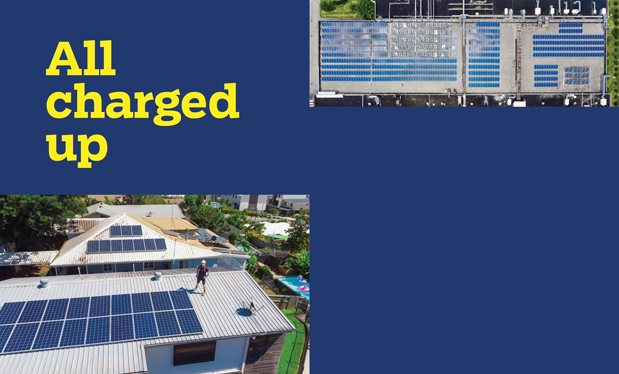As a roofing contractor, your mind is packed with practical insights and solutions to counter the logistical challenges of weathering the elements. After all, being able to identify materials that will withstand an area's high winds or a sudden hailstorm is useful information for customers.
But to grow your business, there are many things to consider beyond knowing suitable materials for your particular area. Knowledge of what attracts customers and the trends that drive their purchasing decisions could be enough to propel your business toward previously overlooked clients.
Following are several burgeoning consumer trends that will help you grow your market and attract a wider range of homeowners and building owners.
Changes in the market
The U.S. economic outlook has been relatively stable the past few years, which means the market for housing and remodeling is flourishing. However, unlike previous years, the driving force in home sales is not necessarily new construction. Tight housing markets, along with limited buying power for first-time home buyers, have consumers looking to older homes in a way they had not previously. At the same time, well-established homeowners are improving their existing residencies rather than moving to larger homes.
For you, this could mean more business. According to New York City-based Dodge Data & Analytics' 2018 Dodge Construction Outlook, the construction market is expected to grow 3 percent during 2018 as construction work moves into a more mature, stable phase of expansion.
Given these market shifts, it may be more important than ever to examine your customers' mindsets. Obviously, working with residential clients is different from working with a large housing development, and it requires more finesse and insight into consumer psychology. You benefit when you empathize with each client's particular situation.
Older clients may be thinking about how their homes will suit them as they age and lose mobility. Younger homeowners are more concerned with how a home fits in with their personal styles and values. These issues drive roofing decisions. Consider a Baby Boomer (those born between the mid-1940s and mid-1960s) who may want low-maintenance materials with a longer lifespan compared with a first-time home buyer who may gravitate toward textures and colors that will set his or her home apart from the neighbors' houses. To attract the widest range of consumers, you need to be able to accommodate multiple sets of needs.
Marketing for demographics
Part of the challenge is choosing the right format for your marketing campaign. Marketers often get excited about the newest, latest thing and push digital marketing efforts above other types of media.
However, for you, that may be a mistake. There is evidence many consumers still gravitate toward older formats. For instance, a majority of the people in the Generation X group (those born between the mid-1960s and 1981) bring in their mail every night, and 68 percent of them have used coupons received in the mail, according to McDonald Marketing, Denver. Similarly, surveys such as those conducted by The Nielson Co., New York City, have found the newest generation of homeowners, Millennials (those born between 1982 and the mid-1990s), listen to the radio a lot. This demonstrates traditional formats such as direct mail campaigns and radio advertisements may be successful at reaching younger demographics.
In another twist, digital marketing appears to be quite successful for attracting Baby Boomer consumers. The 55-and-older segment makes up more than one-third of Facebook's audience, and 70 percent of them say they log into social media sites at least once daily, according to Statista, Hamburg, Germany, an international provider of market and consumer data. An active social media presence—along with professional Facebook ads—may go a long way to woo this group.
For you, this means marketing efforts must span old and new formats. Many roofing professionals find canvassing nearby neighborhoods with flyers to be an effective approach. However, this tactic is made more powerful when the flyers include copy encouraging potential customers to "Google" their companies. By doing so, you are matching a customer's natural inclination to search the internet for roofing companies.
However, such advertising will not be effective without a top-tier web presence. To accomplish this, there are two major areas on which to focus: revamping your company's website and optimizing your company's business page on Google My Business, a tool for businesses and organizations to manage their online presence.
It is extremely important you revisit your business website and optimize it for mobile viewing. Internet research groups, such as Zenith Research Group Inc., Duluth, Minn., are predicting mobile phones will make up 75 percent of internet use by the end of 2018. Regardless of whether this prediction becomes a reality, mobile browsing now encompasses about 52.2 percent of all web traffic, according to Statista, and eight out of 10 mobile users say they will stop engaging with content if it doesn't display well on their mobile devices.
And yet, according to the third annual Small Business Survey conducted by Washington, D.C.-based Clutch, a data collection company, 17 percent of small businesses have yet to optimize their sites for mobile use, and a shocking 29 percent don't have any kind of web presence. This is unfortunate because the conversion rates (potential customers turning into actual customers) for mobile users are nearing levels for conventional desktop and laptop computers, according to Smart Insights Ltd., West Yorkshire, U.K., a marketing publisher. Overall, this points to a wide demographic of consumers you might be missing.
Google My Business is another area where you can improve your marketing efforts. According to Internet Live Stats, Google processes about 40,000 searches per second, which means appearing in those searches may be pivotal to the success of small businesses. Google listings have the added benefit of reviews and ratings, which you can leverage to lend credibility to your business. This seems especially relevant for roofing companies that often are fighting against a poor overall industry reputation.
Just taking these basic steps to build or bolster your web presence can have a huge effect on your marketing efforts regardless of the generation you're looking to attract. Establishing credibility through online materials is a must for attracting customers in every generation.
Millennials drive trends
In previous years, the main aesthetic requirement for roofing materials was simply that they blend in. Design-wise, the goal was to find a color and material that fit the architectural style of a home. However, with more Millennials moving into homes of their own, subtle roof systems are being replaced with materials in bold colors that fit this generation's vision of a home as a reflection of personal style.
According to the Metal Roofing Alliance, there has been an uptick in rich, vividly colored roof systems selected during 2018. It is becoming more common to see bright reds, striking whites and deep-blue colors on rooftops across the U.S. This movement is in line with broader trends where younger demographics are pushing manufacturers to offer more colors, styles and texture options in home improvement materials. Roofing contractors are realizing the same pull flooring manufacturers and makers of wall coverings are seeing—younger buyers are eager to personalize their homes with a wider range of colors and textures with new materials taking center stage.
Millennials also are powering more profound changes in roofing materials. During 2017, the release of photovoltaic shingles from SolarCity, now Tesla,® Palo Alto, Calif., marked them as an energy-generation companion in the roofing industry. Millennials overwhelmingly favor energy-efficient products and are likely to endorse companies that present themselves as forward-thinking, environmentally focused businesses. Millennials also tend to favor organizations that use values to drive their business efforts. The convergence of these trends presents a possible niche for your company to be seen as an energy-friendly company, particularly as more Millennials become homeowners.
Find the time for marketing
Of course, there's an obvious reason why so many roofing contractors overlook or neglect marketing efforts—they're busy. Many are out of the office a majority of the day, which leaves little time for anything else.
Owners of roofing contracting companies often struggle to delegate marketing and advertising tasks to others. But hiring consultants for professional work such as marketing allows business owners to take advantage of consultant expertise while giving them time to handle the client side of operations.
Many roofing contractors also are resistant to engage "lead generation" services and other marketing groups because of these industries' poor reputations. In the past, many lead generation services were poor indeed—offering miniscule value for the money. However, that's changing, as well. Marketing options for roofing contractors are much more varied and robust than those of the past. Engaging a professional marketing group now means nuanced differences in consumer demographics can be addressed with a polished, results-backed approach.
Considering how the consumer mindset is changing, the digital landscape offers a real business opportunity for roofing contractors willing to adjust their marketing approaches. In particular, roofing contractors may benefit from adjusting budgets to dedicate more money toward marketing efforts. The Small Business Administration recommends businesses with less than $5 million in annual sales spend at least 7 to 8 percent on marketing and advertising. However, that number may be on the conservative side. For businesses in competitive industries—such as roofing—it may be wise to increase marketing and lead generation spending up to 20 percent of the total budget.
As digital disruption begins to affect the home improvement industry, you can modernize your business to appeal to various marketing demographics by updating your marketing efforts to leverage online channels. Organizations that embrace change will form successful, modern businesses that appeal to present-day homeowners.
Tanner Bond is director of demand generation for Modernize Inc., Austin, Texas.
For articles related to this topic, see:
"Are millennial buyers a myth?" April 2017 issue
"Endless possibilities," February 2017 issue
"Creative marketing," December 2016 issue



